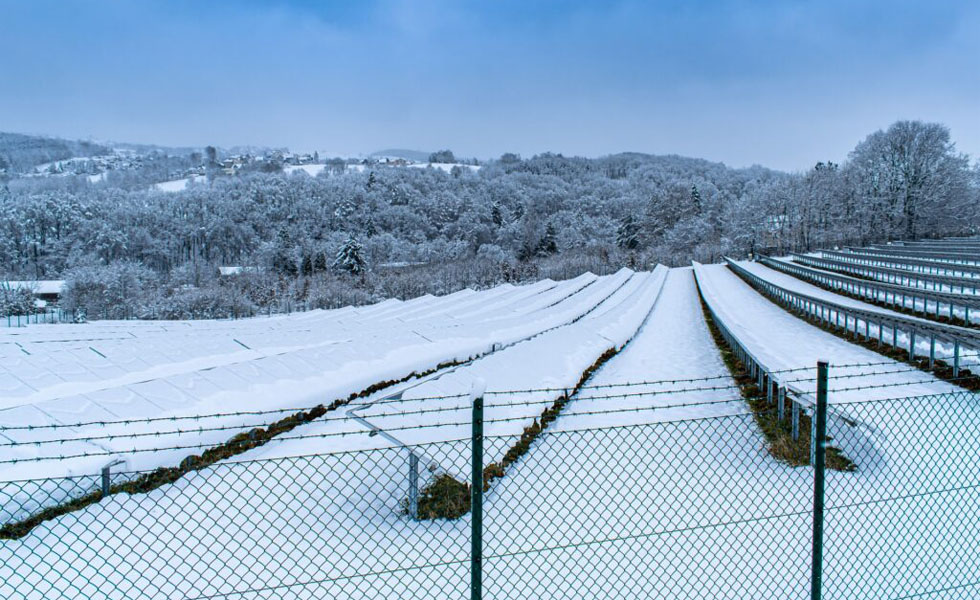
When homeowners think about the cold and snowy winter, they can be discouraged from switching to solar energy. Additionally, those in areas experiencing cold weather most parts of the year can think that switching to solar is not a good investment. This is not the case. Solar panels also work in cold weather and climatic regions.
In fact, some studies indicate solar panels produce electricity more efficiently during cold weather. Did you know that snow on the ground can reflect sunlight to the PV modules improving productivity?
Solar Panels for Cold Climates
When snow rests on the solar panels for a long, they reduce production. Furthermore, if it is also windy, some solar panels in a windy climate can experience lifting, resulting in severe damage. When considering solar panels for cold temperatures, their mounting system and orientation matter a lot. Let’s compare the various orientations and mounting and how they work in cold climates.
Comparing Vertical & Horizontal Orientations for Cold Climates
Does your region experience a lot of snow during the winter? Choosing a vertical panel orientation may not be the best idea. Generally, solar panel installers can install wider or taller PV modules; horizontally or vertically. When it snows, it typically slides down to the edge of the vertical panel. If solar panels get covered in snow, their productivity decreases.
Solar panels are mostly organized in cell strings running horizontally. They do not run vertically. When any of the strings is blocked, the production of each string on the panel is limited. Ideally, when installed horizontally, only one or two sets are blocked.
Additionally, even after having horizontal panels, the entire system’s rack orientation is also crucial. Some landscape-oriented solar panels with vertical racks can get rid of the snow much faster than horizontally-racked PV arrays.
Horizontal racks can stack snow beneath the solar panels where it fails to fall to the ground. This holding of the snow can be freezing and preventing the snow from falling. When a solar array is covered in snow, it affects energy production. For solar panels in snowy conditions to generate electricity, it needs to melt quickly. When installing solar panels for cold, snowy climates, it is preferable to go for horizontal orientation with vertically mounted panels.
Adjustable Panels for Cold and Snowy Weather
Several areas experience heavy snow. As a homeowner in this region, you can avoid some issues brought about by the snow by purchasing adjustable mounts for your solar panel installation. With these mounts, the panels tilt, allowing the snow to fall. You can repeat the action severally.
This feature increases solar energy production. The ideal tilt for solar panels can change throughout the year as the earth revolves and rotates. However, this tilt function can be set on a steeper angle allowing the snow to melt. When the angle is steep, snow falls to the surface more quickly, ensuring better solar power production.
Getting Snow Guard for Solar Panels
Solar PV modules are made to attract the sun’s rays and convert them into electricity. Solar panels have a 36°F which is warmer than ambient temperature. Any slight sun rays cause the solar panels to start warming up, making the snow to melt. Apart from relying on that natural process, homeowners can decide to buy snow guards for their solar panels.
Solar snow guards are used to preventing any damage to the solar panels. Remember, solar panels are built to withstand many conditions. However, it can be an excellent investment to get snow guards for the PV modules. Additionally, solar panels compared to standard roofing material do not provide much friction for the snow that collects on them.
As a result, large chunks of snow can slide easily, which can cause some damage to your property. Using a snow guard allows the snow to melt and fall off gradually.
Falling heavy snow can cause problems to the solar panels due to the increased weight. Most of the solar panels manufactured today contain frames that resolve this problem. There are no specific solar panels made for the cold climate. However, you can use the best installation designs and orientation to guarantee energy production. Adjustable panels can also be ideal for homeowners living in cold climates.
